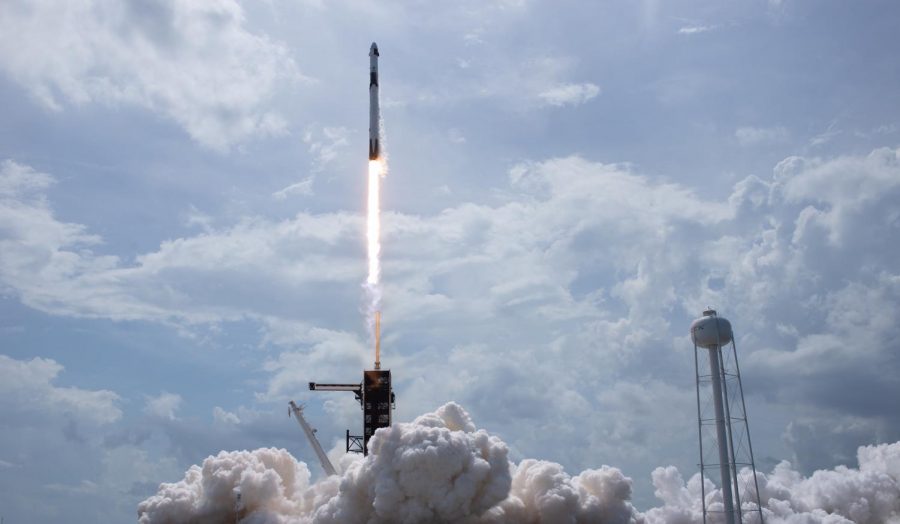Launching into the Future
This past May, SpaceX and NASA made history by launching and successfully sending a commercial rocket to the International Space Station. SpaceX’s Crew Dragon spacecraft, carrying astronauts Doug Hurley and Bob Behnken, was launched by a Falcon 9 reusable two-stage rocket. The mission was a massive success and turned heads around the world.
The implications of this SpaceX launch on the future of space travel are huge. Since the end of the space shuttle program in 2011, nine years have passed since the launch of astronauts into orbit from American soil. I think that this launch and the overwhelmingly positive public reception will spark a revitalization of space exploration in the next 50 years led by commercial spacecraft manufacturers.
The SpaceX launch is not just the beginning of a new chapter in commercial rocket launches, but it does so at a much better cost. Most human missions are measured in cost per seat, or per astronaut. The Apollo space shuttle flights costed NASA upwards of 300 million dollars per seat, while Russian Soyuz launches have costed NASA around 80 million dollars per seat to send American astronauts to space. Impressively, SpaceX Crew Dragon cost only 50 million dollars per seat, as found by a NASA audit. Since space travel is largely funded by taxpayers, cost is of the essence.
SpaceX has several initiatives planned for the upcoming years to work towards its goal of the colonization of Mars, like the Starship/Superheavy rocket aimed at reaching both the Moon and Mars. A more outlandish project is Starlink, a concept for a satellite constellation made up of 12,000 small satellites orbiting in low-Earth orbit to provide satellite-based Internet access around the globe.
Of course, SpaceX will have its fair share of competition to obtain US government contracts; Blue Origin and Boeing are two notable ones. Regardless, the future of space travel rests in the hands of commercial enterprises, and competition will drive innovation.








